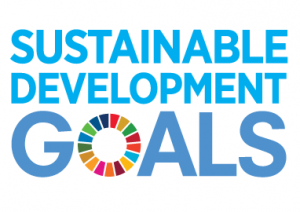 In 2015, the Sustainable Development Goals were agreed upon by the United Nations. The 17 individual goals call for measures to improve people’s living conditions and protect ecosystems and the climate. They represent the centerpiece of the 2030 agenda, with the slogan “Leave no one behind”. A total of 193 countries have committed to implement the agenda by 2030.
In 2015, the Sustainable Development Goals were agreed upon by the United Nations. The 17 individual goals call for measures to improve people’s living conditions and protect ecosystems and the climate. They represent the centerpiece of the 2030 agenda, with the slogan “Leave no one behind”. A total of 193 countries have committed to implement the agenda by 2030.
Forests are closely linked to the livelihoods of human communities (How forestry contributes to SDGs – CFOR). Conserving the world’s mangrove forests can contribute to at least seven of the 17 goals:
Goal 1 – End poverty in all its forms everywhere
Poverty alleviation is a key social function of mangrove forests. Subsistence and income from sales of fish and crabs play an important role in combating poverty. Particularly affected by the degradation of mangroves are indigenous people, women, farmers and fisher.
Targets:
By 2030 build the resilience of the poor and those in vulnerable situations and reduce their exposure and vulnerability to climate-related extreme events and other economic, social and environmental shocks and disasters.
Goal 2 – End hunger, achieve food security and improved nutrition and promote sustainable agriculture
Coastal communities subsist mainly on fishing. Fish and seafood are often the only available source of protein and essential for human well-being. Fish yields and healthy mangrove forests are linked to each other.
Targets:
By 2030 end hunger and ensure access by all people, in particular the poor and people in vulnerable situations, including infants, to safe, nutritious and sufficient food all year round.
Goal 6 – Ensure availability and sustainable management of water and sanitation for all
Mangroves are natural wastewater treatment plants and improve the coastal water quality.
Targets:
By 2030 improve water quality by reducing pollution, eliminating dumping and minimizing release of hazardous chemicals and materials, halving the proportion of untreated wastewater and substantially increasing recycling and safe reuse globally.
By 2020 protect and restore water-related ecosystems, including mountains, forests, wetlands, rivers, aquifers and lakes.
Goal 11 – Make cities and human settlements inclusive, safe, resilient and sustainable
Mangrove forests provide natural coastal defense, which protects the coastal communities from the effects of flooding and tsunamis, but also of coastal erosion. In the absence of mangroves much money needs to be invested in protection measures.
Targets:
By 2030, significantly reduce the number of deaths and the number of people affected and substantially decrease the direct economic losses relative to global gross domestic product caused by disasters, including water-related disasters, with a focus on protecting the poor and people in vulnerable situations.
Goal 13 – Take urgent action to combat climate change and its impacts
Mangroves are significant carbon sinks. Thereby, they contribute to climate change mitigation.
Targets:
Strengthen resilience and adaptive capacity to climate-related hazards and natural disasters in all countries.
Goal 14 – Conserve and sustainably use the oceans, seas and marine resources for sustainable development
Mangrove forests are breeding and spawning areas as well as feeding grounds for marine organisms – thus contributing to healthy oceans and marine resources. Their filtering and cleaning function improves the water quality in coastal areas and protect therewith neighboring ecosystems like coral reefs and seagrasses.
Targets:
By 2020, sustainably manage and protect marine and coastal ecosystems to avoid significant adverse impacts, including by strengthening their resilience, and take action for their restoration in order to achieve healthy and productive oceans.
Goal 15 – Protect, restore and promote sustainable use of terrestrial ecosystems, sustainably manage forests, combat desertification, and halt and reverse land degradation and halt biodiversity loss
Mangroves occupy about 0.5% of the world’s coastal area and account for about 0.1% of the of the earth’s continental surface. Today, they are among the most threatened ecosystems. Because of their location between land and sea, they are an important habitat for a variety of animals. They thus contribute to the conservation of biodiversity. That’s why their protection, conservation and reforestation is important.
Targets:
By 2020, ensure the conservation, restoration and sustainable use of terrestrial and inland freshwater ecosystems and their services, in particular forests, wetlands, mountains and drylands, in line with obligations under international agreements.
By 2020, promote the implementation of sustainable management of all types of forests, halt deforestation, restore degraded forests and substantially increase afforestation and reforestation globally.
Take urgent and significant action to reduce the degradation of natural habitats, halt the loss of biodiversity and, by 2020, protect and prevent the extinction of threatened species.
